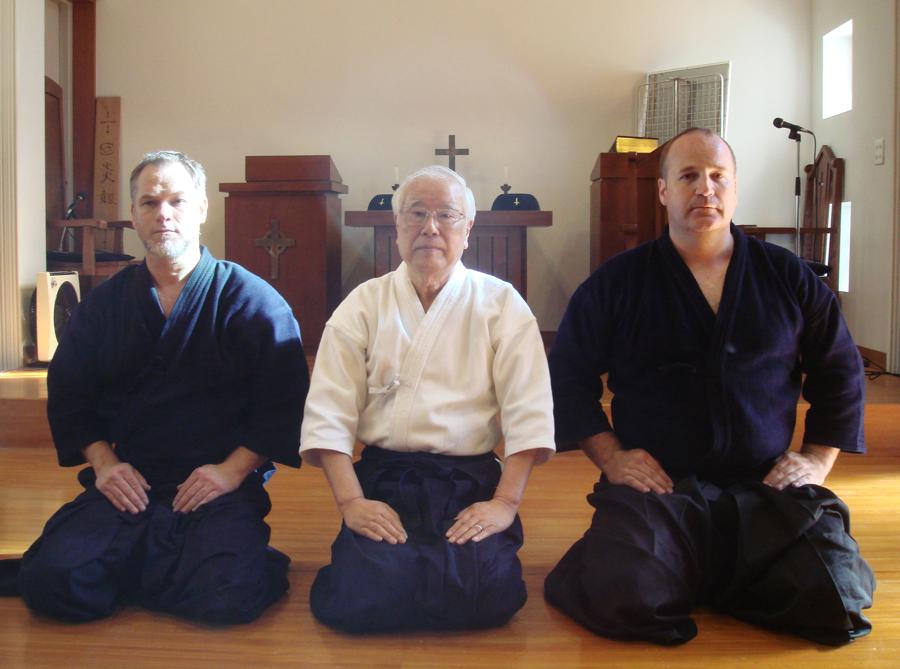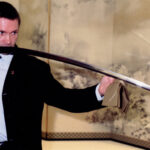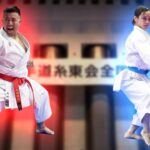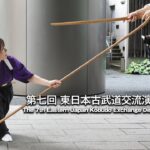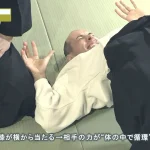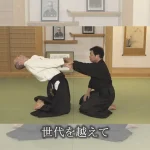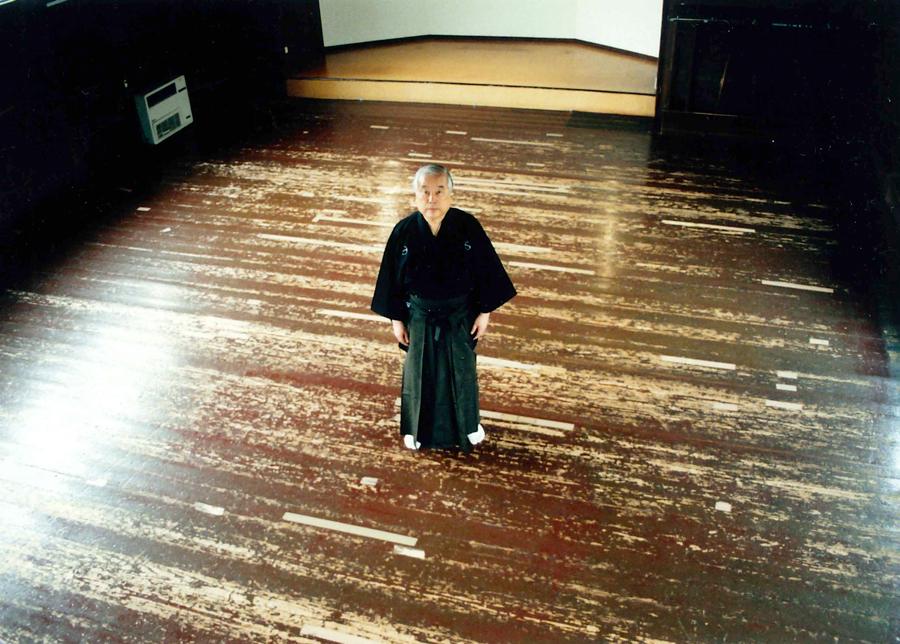 Text by Grigoris A.Miliaresis
Text by Grigoris A.Miliaresis
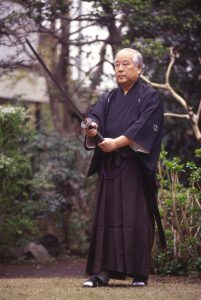 Even if you’re not a Christian, growing in Greece you can’t not know what August 15 is: it’s the anniversary of the Dormition of the Mother of God, i.e. the death of Virgin Mary and one of the country’s public holidays. Combined with the summer vacation period which for most Greeks reaches its pinnacle on August, “dekapentaugoustos” (“August 15”) especially in Athens and all the other cities is almost eerie: shops are closed, cars are scarce and there are no lights at most homes –even people who haven’t gone anywhere for the summer use the holiday as their last chance to take even a small trip. Because after August 15 the summer is gone and everyone knows that even though the weather is still hot, we’ve entered the last stretch before autumn and winter.
Even if you’re not a Christian, growing in Greece you can’t not know what August 15 is: it’s the anniversary of the Dormition of the Mother of God, i.e. the death of Virgin Mary and one of the country’s public holidays. Combined with the summer vacation period which for most Greeks reaches its pinnacle on August, “dekapentaugoustos” (“August 15”) especially in Athens and all the other cities is almost eerie: shops are closed, cars are scarce and there are no lights at most homes –even people who haven’t gone anywhere for the summer use the holiday as their last chance to take even a small trip. Because after August 15 the summer is gone and everyone knows that even though the weather is still hot, we’ve entered the last stretch before autumn and winter.
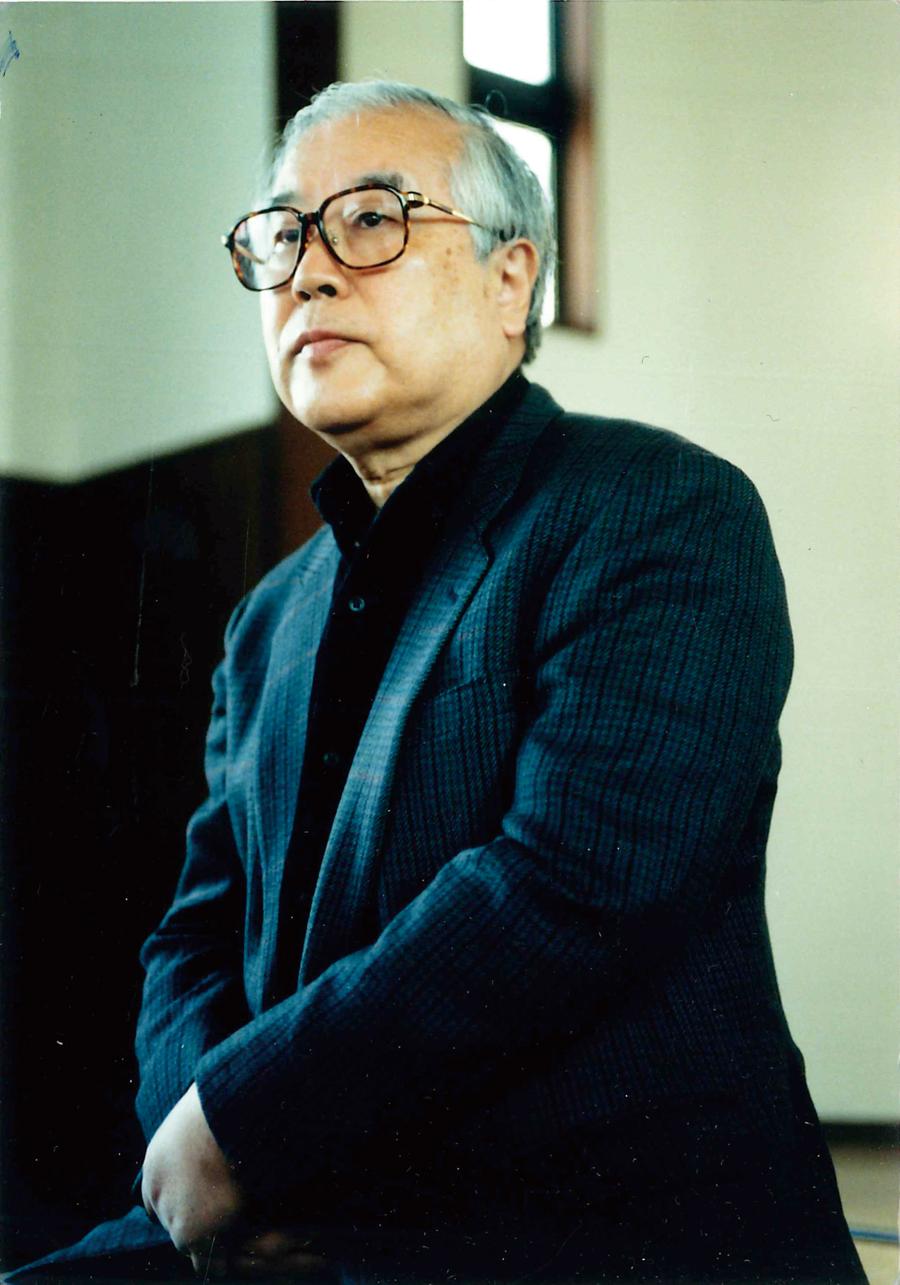 A big Christian holiday and a big day for modern Japanese history too –not a national holiday but the day of the Jewel Voice Broadcast, the termination of WWII and for many Japanese, a day to contemplate on the value of peace, especially after a turmoil that left an indelible mark in the hearts and minds of people all over the world. What a fitting day for Takemi Sasamori, 17th headmaster of Ono-ha Itto-ryu and Methodist minister and pastor of the Komaba Eden Church to pass on. Sasamori sensei lived through tumultuous times (including those of WWII) and through his work both as a minister and as headmaster of one of Japan’s most revered martial traditions, also left an indelible mark in the hearts and minds of people all over the world.
A big Christian holiday and a big day for modern Japanese history too –not a national holiday but the day of the Jewel Voice Broadcast, the termination of WWII and for many Japanese, a day to contemplate on the value of peace, especially after a turmoil that left an indelible mark in the hearts and minds of people all over the world. What a fitting day for Takemi Sasamori, 17th headmaster of Ono-ha Itto-ryu and Methodist minister and pastor of the Komaba Eden Church to pass on. Sasamori sensei lived through tumultuous times (including those of WWII) and through his work both as a minister and as headmaster of one of Japan’s most revered martial traditions, also left an indelible mark in the hearts and minds of people all over the world.
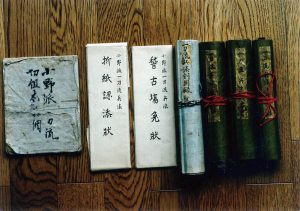 Sasamori sensei traveled a lot to disseminate the school he inherited from his father, legendary kendoka and educator Junzo Sasamori (1886-1976) and he was also open to non-Japanese visiting his dojo, Reigakudo (uniquely housed in his Komaba Eden church in Tokyo’s Setagaya) and, if interested, joining it. Rarely a month went by without practitioners from some of the study groups of OHIR from the United States, Europe or Asia coming to practice and to benefit from Sasamori sensei’s teaching and the wonderfully amicable atmosphere he had created in the dojo he had built. Some of these practitioners were kind enough to share a few thoughts about their departed teacher –we just asked them a few questions and recorded their answers.
Sasamori sensei traveled a lot to disseminate the school he inherited from his father, legendary kendoka and educator Junzo Sasamori (1886-1976) and he was also open to non-Japanese visiting his dojo, Reigakudo (uniquely housed in his Komaba Eden church in Tokyo’s Setagaya) and, if interested, joining it. Rarely a month went by without practitioners from some of the study groups of OHIR from the United States, Europe or Asia coming to practice and to benefit from Sasamori sensei’s teaching and the wonderfully amicable atmosphere he had created in the dojo he had built. Some of these practitioners were kind enough to share a few thoughts about their departed teacher –we just asked them a few questions and recorded their answers.
The questions were:
1) Why did you decide to join Ono-ha Itto-ryu?
2) When did you join? What is your current level?
3) When was your first contact with Sasamori soke?
4) How many times/years/hours did you train under him?
5) What do you think of him as a teacher and a martial artist?
6) What do you think was his best quality as a teacher?
7) Do you have some special memory of him?
8) If you have trained at the Reigakudo in Tokyo what was your impression of the dojo -to the extent that the dojo is usually a reflection of its head/teacher.
9) Sasamori soke was a martial artist and a Christian minister; an unusual combination, particularly in Japan. How do you think this informed his worldview and his capacity as a teacher, particularly of non-Japanese?
Nathan Scott (USA)
Los Angeles Police officer, training since 1980 in various martial arts, currently also practicing Daito-ryu Aikijujutsu
1) I felt like there was something missing from my previous battodo training, so was looking to study a strong koryu art. After two years of research, I realized Ono-ha Itto-ryu was a really important koryu that was not well represented internationally, so I committed myself to seeking out instruction.
2) My training partner and I travelled to the Reigakudo in February of 2011 and were accepted as students by Sasamori Soke. None of us in America have been ranked yet.
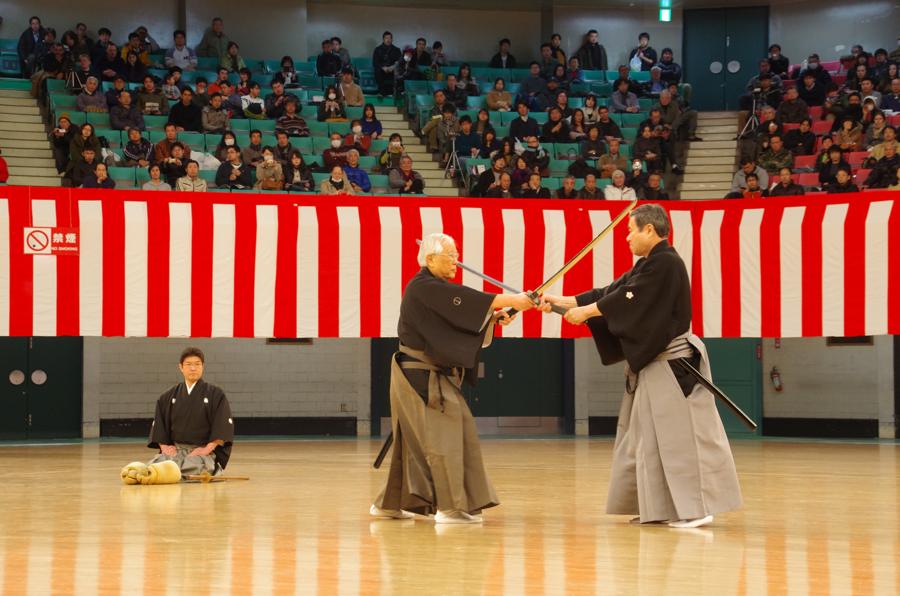 3) A week before our kengaku we watched Soke’s demonstration at the “34th Nihon Kobudo Enbu-Taikai”, where a special ceremony was held in which he was awarded a special award medal from the Nihon Kobudo Kyokai recognizing his ongoing efforts to maintain and spread classical martial arts.
3) A week before our kengaku we watched Soke’s demonstration at the “34th Nihon Kobudo Enbu-Taikai”, where a special ceremony was held in which he was awarded a special award medal from the Nihon Kobudo Kyokai recognizing his ongoing efforts to maintain and spread classical martial arts.
4) My wife and I visit Japan for about a month out of every year, so I managed to train under him about 30 times total.
5) Sasamori Soke really stood out as a world class expert in martial arts. He had absorbed into his being the deepest gokui hidden within koryu, and as a result was a living example of a master level exponent. His skill and understanding of bugei was very sophisticated and advanced.
6) His ability to provide a living example for the rest of us to model ourselves after, as opposed to many others who might simply say “do as I teach, not as I do”.
7) One year I brought him apple flavored candy from his hometown of Aomori as an omiyage, and he really lit up in excitement like a young boy. I was happy to have found something that reminded him of his youth.
8) My strongest impression of the Reigakudo Dojo was during kengaku. I was impressed to see so many students training really seriously. The energy in the dojo was very good, and everyone was very kind to us.
9) Soke followed a fascinating path of both the “Way of Peace” and the “Way of War”, and I think because of this he understood the nature of human beings very well, including their strengths and weaknesses. I think this facilitated him connecting to all types of people.
Clifford Judge (USA)
Software Engineer, 13 years of Aikido, six years of Yagyu Shinkage Ryu.
1) Ono-ha Itto Ryu was the first koryu art I had the opportunity to be introduced to. Kaiwa Sensei, the senior Hon Mokuroku holder at the Reigakudo, is also a long-time Aikidoka, and was invited by my Aikido teacher back in the United States, Mitsugi Saotome, to visit us and show us some Ono-ha Itto Ryu. This was in 2007. Sasamori Soke granted permission to teach us the first five kata. I was very impressed with how deep these kata were, they were everything I had ever read about koryu. I knew I had to join if I ever had the opportunity to live in Japan.
2) I joined the Reigakudo in January 2016. I have not yet earned any certificate.
3) I very briefly met Sasamori Soke when visiting the Reigakudo in 2007. (I only had time to say hello and thank him for letting me watch class.)
4) I have attended most of the thrice-monthly Saturday general training sessions since joining the dojo in January, 2016. Most of the sessions in 2016 took place under his direct supervision.
 5) Soke’s teaching style was to allow the teachers under him to practice their teaching, and sempai to practice being sempai by mentoring junior students. He supervised class from a raised pulpit at the front of the dojo. At first I thought he seemed disengaged, but every training session, I watched him come down from that raised platform and offer specific instruction to either junior student, senior student, or teacher.
5) Soke’s teaching style was to allow the teachers under him to practice their teaching, and sempai to practice being sempai by mentoring junior students. He supervised class from a raised pulpit at the front of the dojo. At first I thought he seemed disengaged, but every training session, I watched him come down from that raised platform and offer specific instruction to either junior student, senior student, or teacher.
His skills as a martial artist were similarly subtle in how they revealed themselves. I saw him give embu on youtube many times and in person once, and his sword seemed too large for him, his body lacking power. After learning more about Ono-ha Itto Ryu I was thoroughly disabused of this notion! What I didn’t see at first was that his power was all in his sword, and his body was simply relaxed. I once saw him knock a senior student off balance when they simply touched sword tips together, he didn’t move at all. And his precision was phenomenal. I think that Itto Ryu techniques are very dynamic – it seems that the slightest twitch of a muscle, or a step that is a millimeter to one side or the other can cause a big difference in the way the swords come together. But Soke’s sword was always in the perfect place. Never too much, never too little.
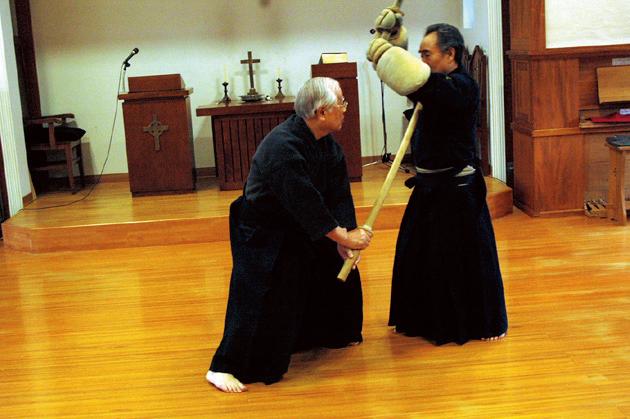 6) Soke was a warm and kind person. Perhaps more than a very strict teacher, I think this encouraged everyone to try their hardest every day to master Ono-ha Itto ryu.
6) Soke was a warm and kind person. Perhaps more than a very strict teacher, I think this encouraged everyone to try their hardest every day to master Ono-ha Itto ryu.
7) My favorite memory of Soke was not a single event but a few occasions when, by direct or indirect word or action, he made me to feel, personally, that I was welcome as his student and that my efforts towards learning Ono-ha Itto Ryu were appreciated by him.
8) The Reigakudo is a place where people train very hard, but everyone seems to enjoy it very much. It is a very formal dojo, without being very strict.
9) I was not raised in the Methodist sect but my understanding is that they view salvation as requiring hard work and sacrifice, very similar to budo. I think Soke felt that Ono-ha Itto Ryu should be allowed to grow and spread around the world, to anyone who was willing to devote earnest effort to learning it; this is a very similar attitude to what I understand of Methodist evangelism.
Mark Hague (USA)
Businessman, trained in karate and judo, currently also practicing Daito-ryu Aikijujutsu
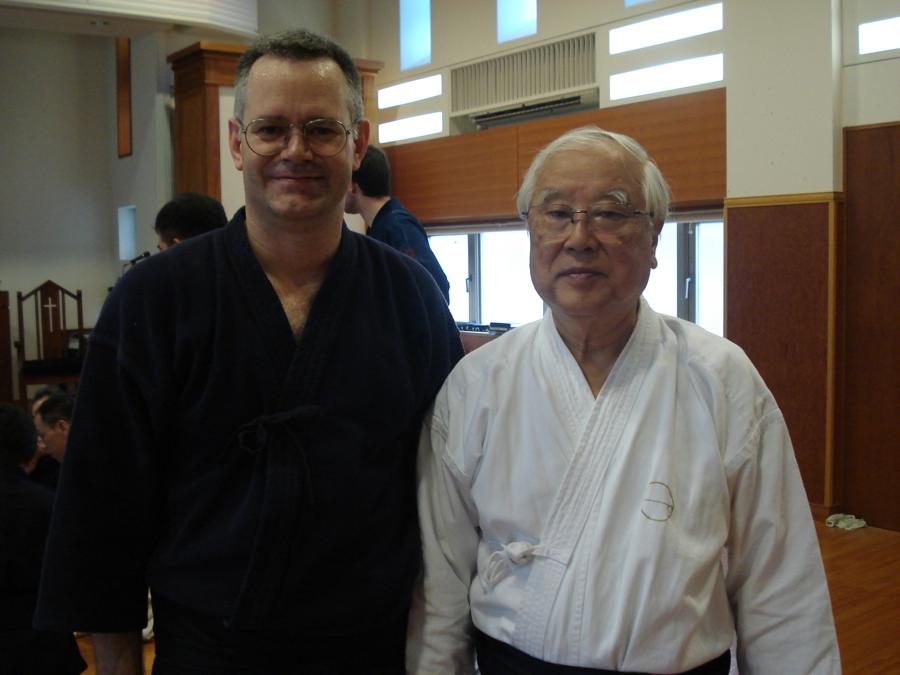 1) I wanted to experience the kind of martial arts training that samurai warriors of the past went through. So, I gave Ono-ha Itto-ryu a try in 2002 and found I really enjoyed it. I have actively practiced it ever since.
1) I wanted to experience the kind of martial arts training that samurai warriors of the past went through. So, I gave Ono-ha Itto-ryu a try in 2002 and found I really enjoyed it. I have actively practiced it ever since.
2) I joined in 2002. My current level is Kanajisho Menkyo.
3) I first met him when I joined the Reigakudo Dojo in 2002. I called on the school and asked to watch a class. He came over and introduced himself and described the school.
4) Overall, I trained under Sasamori Soke for 15 years, 12 years in the Reigakudo Dojo.
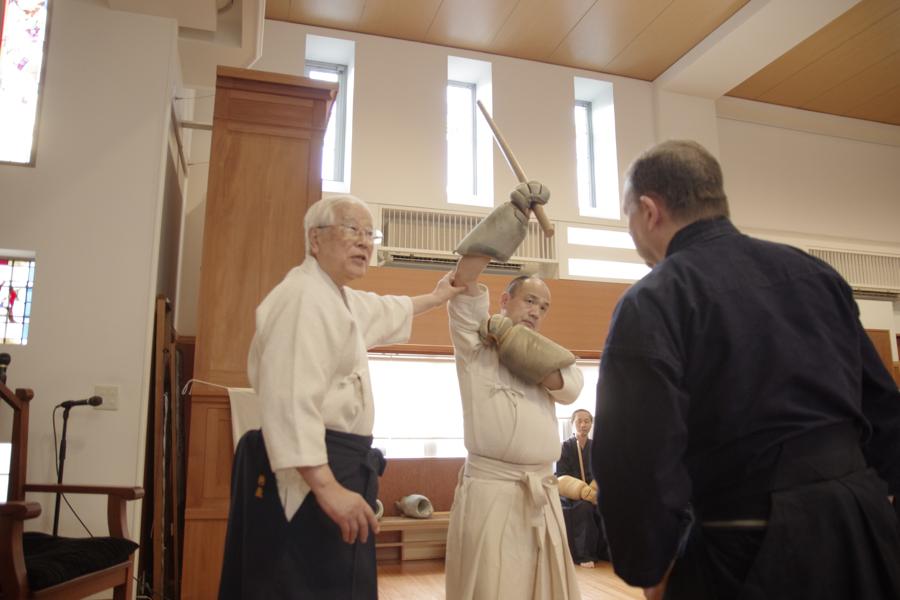 5) Sasamori Soke was a professional teacher. He had teaching credentials from universities in both Japan and the U.S. and worked as an educator in Japan for many years. He knew how to put lesson plans together and convey information in a way students would understand. He was also an excellent martial artist, having learned at his father’s knee since before he was ten years old. This experience gave him an enormous depth of knowledge about sword arts in Japan. He brought the best of both worlds to the dojo – practical teaching ability with 70 years of martial arts experience.
5) Sasamori Soke was a professional teacher. He had teaching credentials from universities in both Japan and the U.S. and worked as an educator in Japan for many years. He knew how to put lesson plans together and convey information in a way students would understand. He was also an excellent martial artist, having learned at his father’s knee since before he was ten years old. This experience gave him an enormous depth of knowledge about sword arts in Japan. He brought the best of both worlds to the dojo – practical teaching ability with 70 years of martial arts experience.
6) He was very patient with his students. I believe he had an enduring confidence that, given time and the right guidance, any student could improve. And he fostered an environment within the dojo that brought out the best in his students.
7) While translating his book “Bushido and Christianity,” I had the opportunity to meet with him outside of class over the course of a year to discuss and clarify what he wrote in his book. Our conversations inevitably led to other topics, and I learned a lot about him as a person, his personal life, family history, etc. I really got to know him more than just a teacher. I will always treasure these conversations.
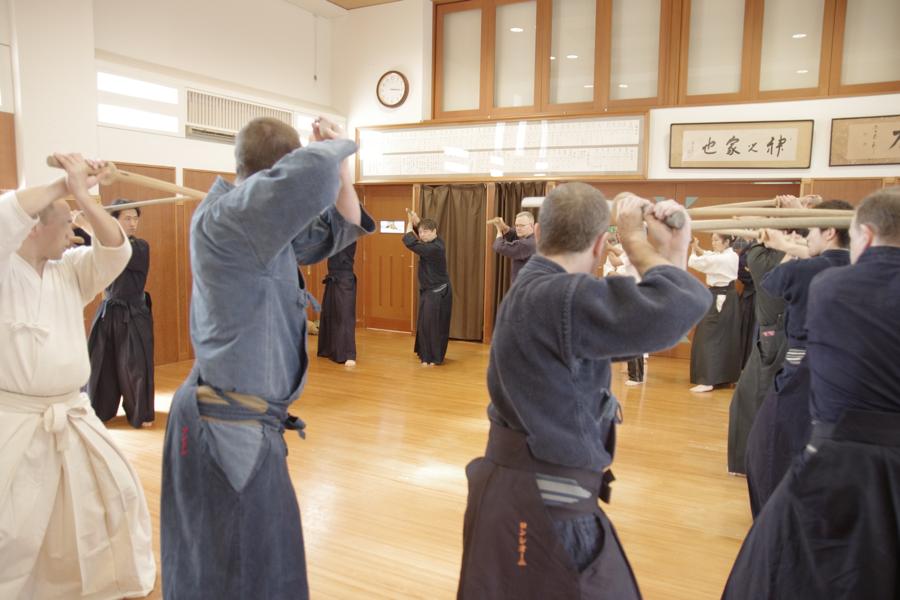 8) There are normally between 20-25 students who regularly attend class, which provides a good opportunity to train with a variety of partners. It is also a good environment in which to practice. Everyone trains together; beginners and seniors practice alike. The senior students take on the role of teachers, which is good for them to not only refine their own abilities but to develop teaching and leadership skills as well. But Soke didn’t just rely on his seniors to train others. He would always lead the class and make corrections when he saw someone in need of help. It didn’t matter if it was a beginner or a senior student who had been there for decades. He was dedicated to teaching the art in a very egalitarian way, which was very much a reflection of his character.
8) There are normally between 20-25 students who regularly attend class, which provides a good opportunity to train with a variety of partners. It is also a good environment in which to practice. Everyone trains together; beginners and seniors practice alike. The senior students take on the role of teachers, which is good for them to not only refine their own abilities but to develop teaching and leadership skills as well. But Soke didn’t just rely on his seniors to train others. He would always lead the class and make corrections when he saw someone in need of help. It didn’t matter if it was a beginner or a senior student who had been there for decades. He was dedicated to teaching the art in a very egalitarian way, which was very much a reflection of his character.
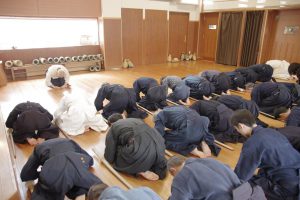 9) Sasamori Soke published his world view in multiple books and magazine articles, where he described the connections between Christianity and Bushido. He was probably the only Christian minister who was also the Soke of an authentic traditional Japanese martial art, and he never shied away from talking about this. He often discussed how, in his denomination, parishioners were encouraged to express their faith through action rather than merely praying or studying in solitude, and he applied this philosophy to his martial arts as well. He practiced the sword as a form of self-cultivation, an ideal pursued by philosophers and warriors in Japan for hundreds of years.
9) Sasamori Soke published his world view in multiple books and magazine articles, where he described the connections between Christianity and Bushido. He was probably the only Christian minister who was also the Soke of an authentic traditional Japanese martial art, and he never shied away from talking about this. He often discussed how, in his denomination, parishioners were encouraged to express their faith through action rather than merely praying or studying in solitude, and he applied this philosophy to his martial arts as well. He practiced the sword as a form of self-cultivation, an ideal pursued by philosophers and warriors in Japan for hundreds of years.
Wout Verschueren (Belgium)
Engineer, longtime iaido practitioner, Muso Jikiden Eishin Ryu
Frederic Roncioni (Belgium)
Accountant, longtime jujutsu practitioner, Hontai Yoshin ryu (chuden)
Guy Buyens (Belgium)
Medical doctor, longtime jujutsu practitioner, Hontai Yoshin ryu (okuden)
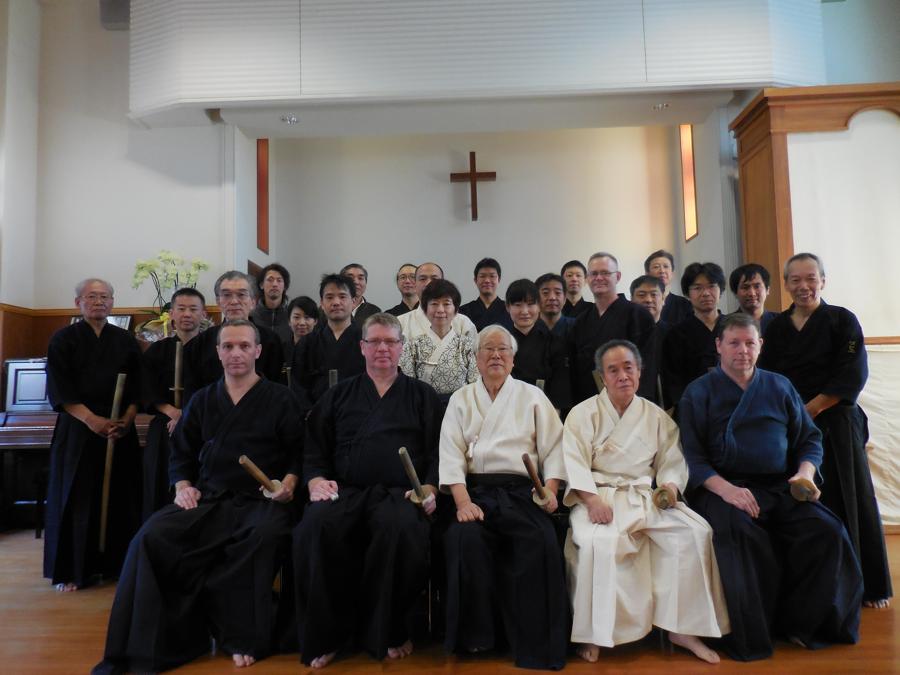
1) The three of us have a long history in gendai budo (karate and kendo) and have been involved in a koryu for about 30 years, therefore the choice to start studying Ono-ha Itto-ryu was well thought: studying kenjutsu seemed very complementary to Hontai Yoshin ryu (Frederic and Guy) and Muso Jikiden Eishin Ryu (Wout). Moreover, Guy and Frederic asked the permission of their soke to study Ono-ha Itto-ryu in parallel with Hontai Yoshin ryu.
2) We had seen Sasamori soke in life at the Nihon budokan, together with some of his senior students performing enbu and were impressed. When in 2011, Guy was over in the US at the same time Sasamori soke was holding a seminar, he decided to fly over to San Diego and train with Soke. He was so excited that he went to Japan the same year to train in Reigakudo.
3) Frederic and Wout joined Guy immediately after his return from San Diego. Because training on our own was difficult, we contacted Andre Otome, who had trained much longer in Reigakudo, before coming back to Germany. Andre helped us a lot and we started to train twice a week. Initially the Belgian keiko-jo was integrated in the German keiko-jo but when Andre moved back to Japan, with the approval of Sasamori soke, we started our own keiko-jo. Nevertheless we still keep very good contact with David Bender and all of our German friends.
4) For the last 6 years, we went at least once a year to Japan and attended the European Taikai with Soke whenever they were organised.
5-6) Sasamori soke was always a very friendly and calm person and yet, even despite his age, he always impressed us when he showed a technique. Where did all this strength and preciseness come from at that age?
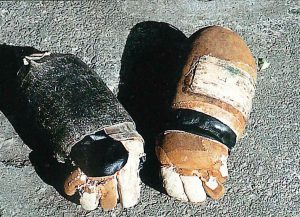 7) The best memory we have dated from some years ago, when we had the chancje to listen how soke explained the Kamon of Ono-ha Itto-ryū. We realised that he must have done this a thousand times but still he was very patient to address our ignorance at that time. He took his time and you could see that not only Itto-ryu was his passion, it had become part of his life.
7) The best memory we have dated from some years ago, when we had the chancje to listen how soke explained the Kamon of Ono-ha Itto-ryū. We realised that he must have done this a thousand times but still he was very patient to address our ignorance at that time. He took his time and you could see that not only Itto-ryu was his passion, it had become part of his life.
9) Although Sasamori soke was a Christian priest (even his dojo is located in a church) his kenjutsu teaching was completely Itto-ryu focussed. It was only after having read his book “Bushido and Christianity” that we started to understand how important the balance between his faith and his duty was. We are very fortunate to have met such a great man.
Tomson Chen (Taiwan)
Serviceman, currently serving National Service (Taiwan), 2 years aikido, 3 years karate
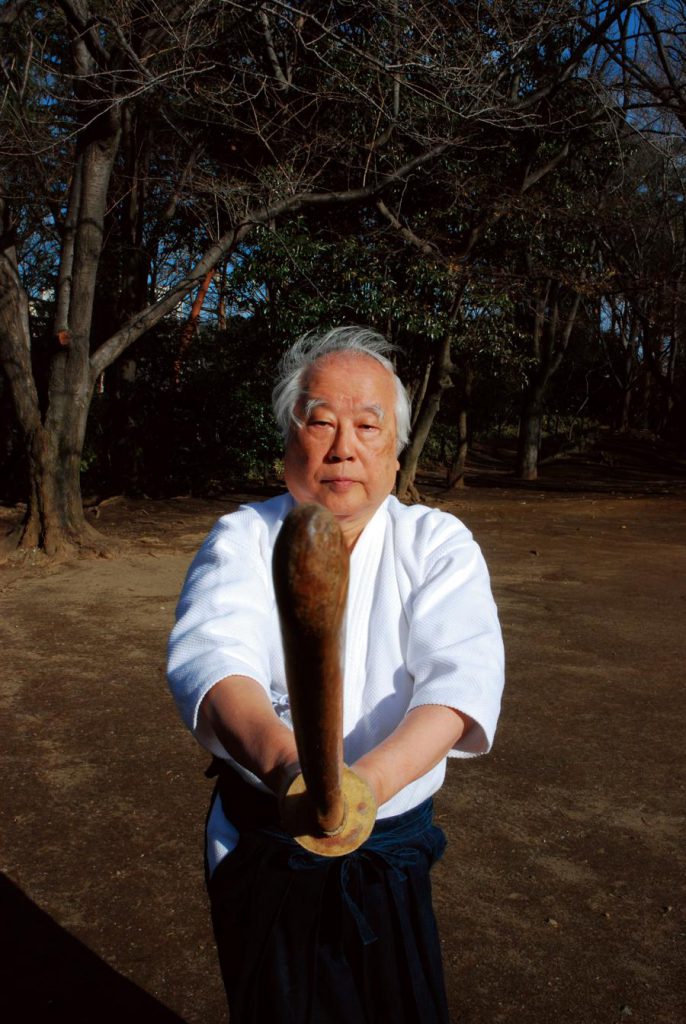 1) I joined Ono-ha Itto Ryu for two reasons. First, being interested in Koryu Kenjutsu and after having watched many years of enbu (though admittedly, on youtube), I became attracted to the straightforward and effective style of Itto Ryu. Second, because I had heard that Sasamori Soke and the members of the ryuha were not only skilled martial artists but also kind, respectful people. Which I of course found out to be true after I joined.
1) I joined Ono-ha Itto Ryu for two reasons. First, being interested in Koryu Kenjutsu and after having watched many years of enbu (though admittedly, on youtube), I became attracted to the straightforward and effective style of Itto Ryu. Second, because I had heard that Sasamori Soke and the members of the ryuha were not only skilled martial artists but also kind, respectful people. Which I of course found out to be true after I joined.
2) I joined in October of 2015. I do not possess any licenses.
3) I first met Sasamori Soke in September, 2015. I had actually written to him earlier in the summer to ask if I could watch or join practice. He replied that I could. So when I arrived in Japan I called him and then visited him to confirm if I could indeed join. He said yes. Then I followed the procedure of watching (kengaku) keiko three times before formally beginning practice afterwards.
4) I practiced at the Reigakudo from October of 2015 to July of 2016. There are 3 training sessions per month, each on a Saturday between 1330 to 1700; I think I missed only about 4 practices between October to July.
5) Sasamori Soke was an outstanding martial artist and teacher. I only knew him for a short period of time. But what stood out to me was that his technique and movement were perfect. Perfect, as in, his techniques were sharp, powerful and showed that they had been carefully practiced countless times.
6) Sasamori Soke’s best quality as a teacher, for me personally, was his dedication and patience. I think he always tried to help his students, myself included, improve and understand techniques at their own pace. I think that’s an important mindset, which I’ve tried to adopt, to focus on learning and improving and not get frustrated in the long journey that Itto Ryu (and Koryu Bujutsu) is.
7) During a Sunday free practice session (自由稽古), a Taiwanese guest came to visit Sasamori Soke to speak about Christianity. Sasamori Soke invited me to speak with them briefly as well as to help with a little bit of translation. This is a special memory for me because I was able to speak to Sasamori Soke in a more casual setting and I felt like I was able to do something for him (translating).
8) I’ve actually never thought it peculiar that the Reigakudo is both a church and dojo. I knew that that Sasamori Soke’s father, who built the Reigakudo, was involved with the Christian religion and I understand that it probably wouldn’t have been practical to build a dojo after the end of the war given the circumstances in Japan. Still, I do feel like the Reigakudo is very much a church and a dojo, in the sense that it serves as a place to improve oneself. I believe Sasamori Soke embodied this very much -his character was constant and unwavering in whatever he did. When he practiced Itto ryu, he was completely invested in it. When he held church service, I believe he was likewise completely invested in it (I must say that I haven’t attended any function at the Komaba Eden Church). In this way, the Reigakudo is a reflection of Sasamori Soke, as he is a reflection of the Reigakudo.
9) I know about Sasamori Soke’s background as a Budoka and a Christian priest. And I have read his book on Christianity and Budo. But I have never asked him about this topic. He has treated myself and everyone equally with generosity, graciousness and respect. Thus, for me, I do not distinguish what part of Sasamori Soke is Budo or Christian. Rather, I saw him as a man whose character was constant; and, as a great representative of both Budo and Christianity.
Postscript
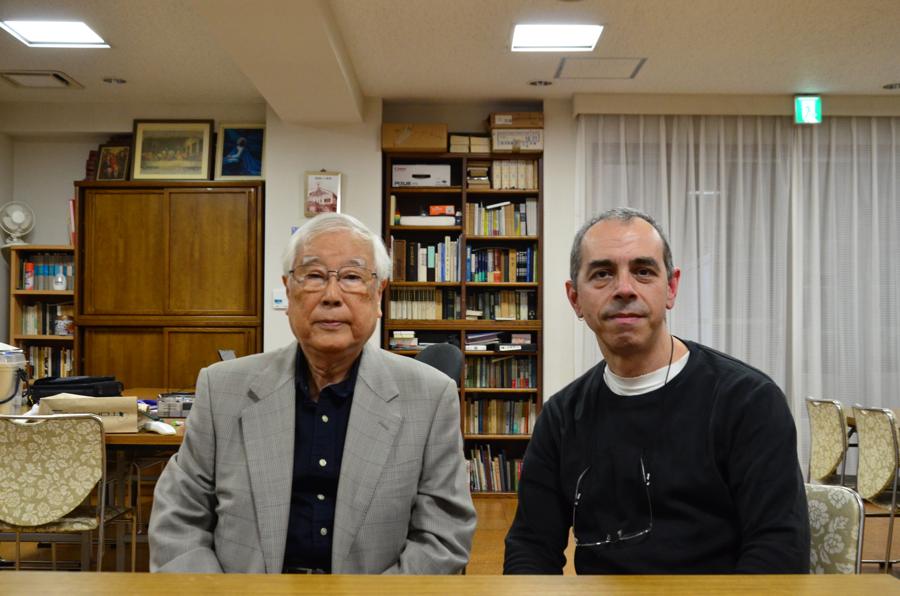
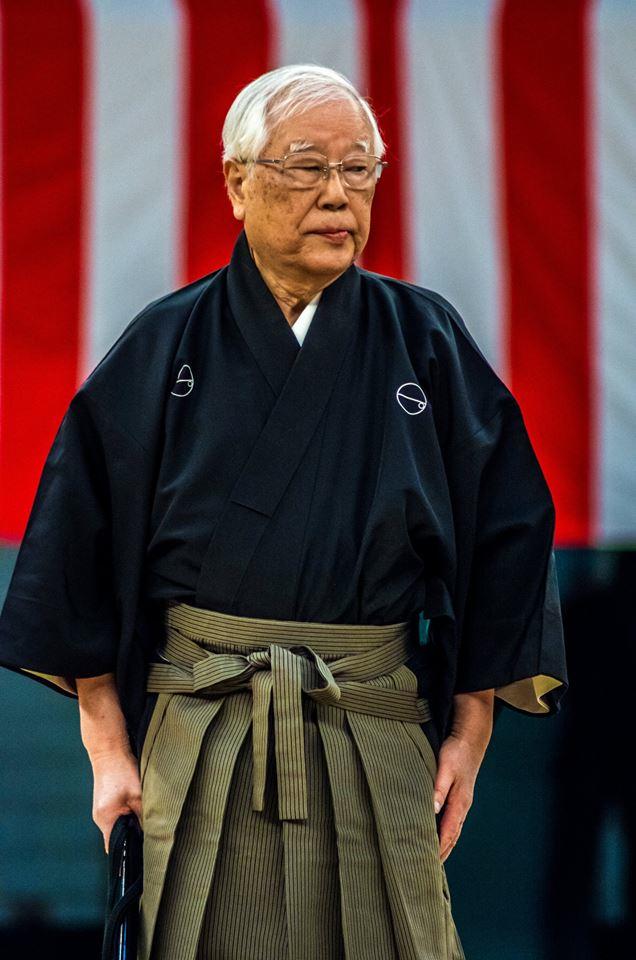 Besides the introduction I didn’t want to write anything else in this article: I think that people who knew Sasamori sensei far better than me are more suited to the task of speaking about him. And besides, last year I had the opportunity to write my impression of him when we did the “One Sword to Rule Them All” story so the reader already knows how fond is my memory of him. Still, and since I was asked, I will write a few more words because, and this isn’t something I’ve shared before with “Hiden’s” readers, after that story, I enrolled in the Reigakudo and had the luck to benefit from Sasamori sensei’s teaching for almost a year. Therefore, I now also have some memories of my own of him; they are certainly very few to do justice to the depth of his knowledge and his love for the tradition he had inherited but they are enough to allow even a beginner like me realize the existence of both.
Besides the introduction I didn’t want to write anything else in this article: I think that people who knew Sasamori sensei far better than me are more suited to the task of speaking about him. And besides, last year I had the opportunity to write my impression of him when we did the “One Sword to Rule Them All” story so the reader already knows how fond is my memory of him. Still, and since I was asked, I will write a few more words because, and this isn’t something I’ve shared before with “Hiden’s” readers, after that story, I enrolled in the Reigakudo and had the luck to benefit from Sasamori sensei’s teaching for almost a year. Therefore, I now also have some memories of my own of him; they are certainly very few to do justice to the depth of his knowledge and his love for the tradition he had inherited but they are enough to allow even a beginner like me realize the existence of both.
(Photo by Grigoris A.Miliaresis)
The most concise way to describe Sasamori sensei to someone who hasn’t met him –and particularly someone from the West- would be that he could very well have been the model for every writer’s or filmmaker’s idea of a martial arts’ teacher. The combination of unfathomable knowledge, eagerness to share and kindness spiced with a dose of good-humored impishness on one hand and impeccable skill and an enlightenment that has led to wisdom we’ve all come to expect, nay, demand, from all the archetypal “sensei” –from “Star Wars’” Yoda to “Karate Kid’s” Mr. Miyagi to “Kill Bill’s” Pai Mei to the Shaolin masters of Kwai Chang Caine in “Kung Fu”- on the other, that combination was all over him. From his look to the tone of his voice, to the way he spoke to what he said to what he did and how, Sasamori sensei was the quintessential martial arts teacher everyone hopes to find.
※0270.jpg)
Related article:Ono-ha Itto-ryu’s “kiriotoshi”: An “invincible” technique, born in the battlefield
Related article:Ono-ha Itto-ryu:One sword to rule them all
Related article:Principles of Budo: Ono-ha Ittō-ryū
 About the author
About the author
Grigoris Miliaresis has been practicing Japanese martial arts since 1986. He has dan grades in judo, aikido and iaido and has translated in Greek over 30 martial arts’ books including Jigoro Kano’s “Kodokan Judo”, Yagyu Munenori’s “The Life-Giving Sword”, Miyamoto Musashi’s “Book of Five Rings”, Takuan Shoho’s “The Unfettered Mind” and Donn Draeger’s “Martial Arts and Ways of Japan” trilogy. Since 2007 his practice has been exclusively in classic schools: Tenshin Buko-ryu Heiho under Ellis Amdur in Greece and Kent Sorensen in Japan and, since 2016, Ono-ha Itto-ryu under 17th headmaster Sasamori Takemi and 18th headmaster Yabuki Yuji.
http://about.me/grigorismiliaresis

